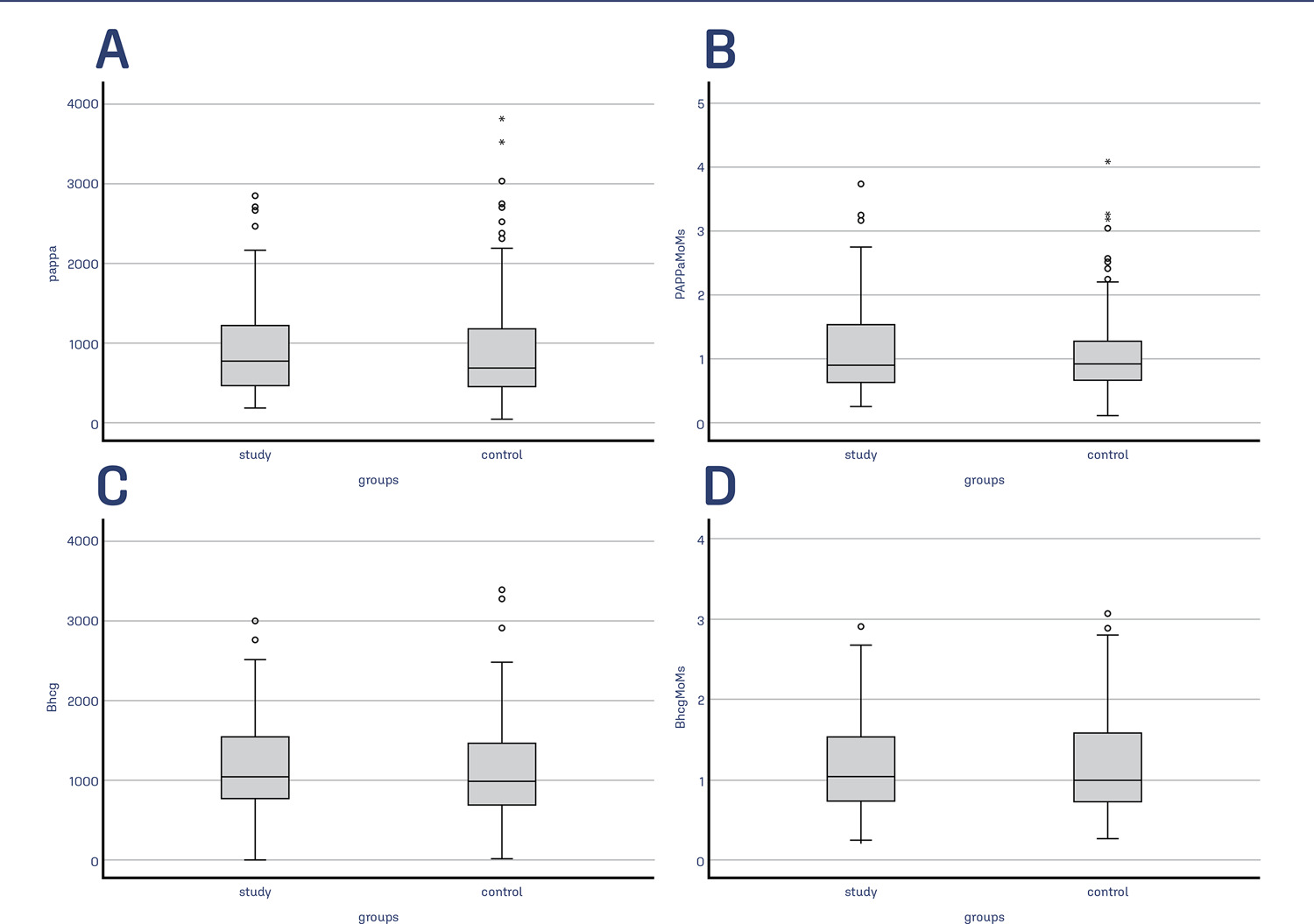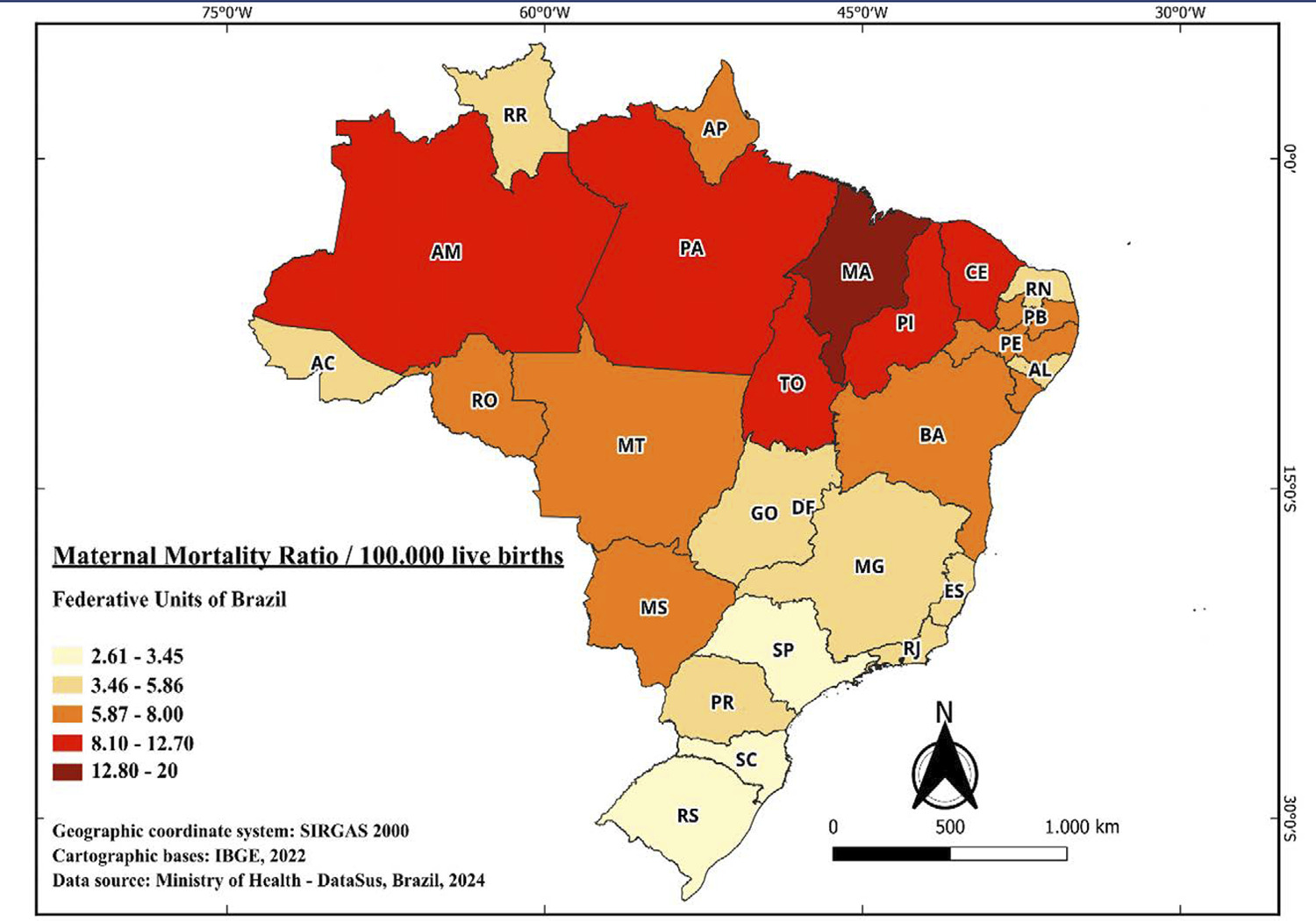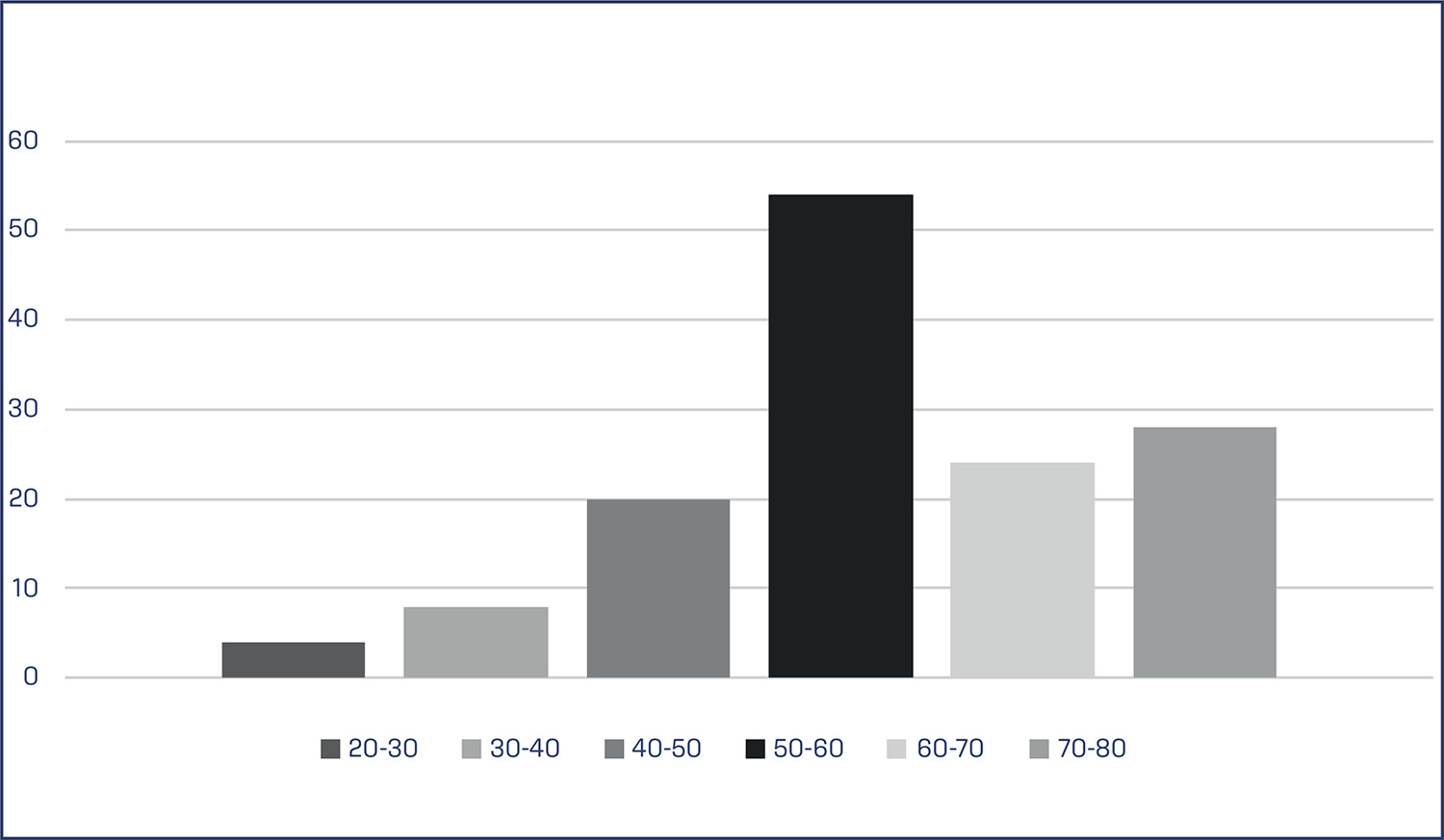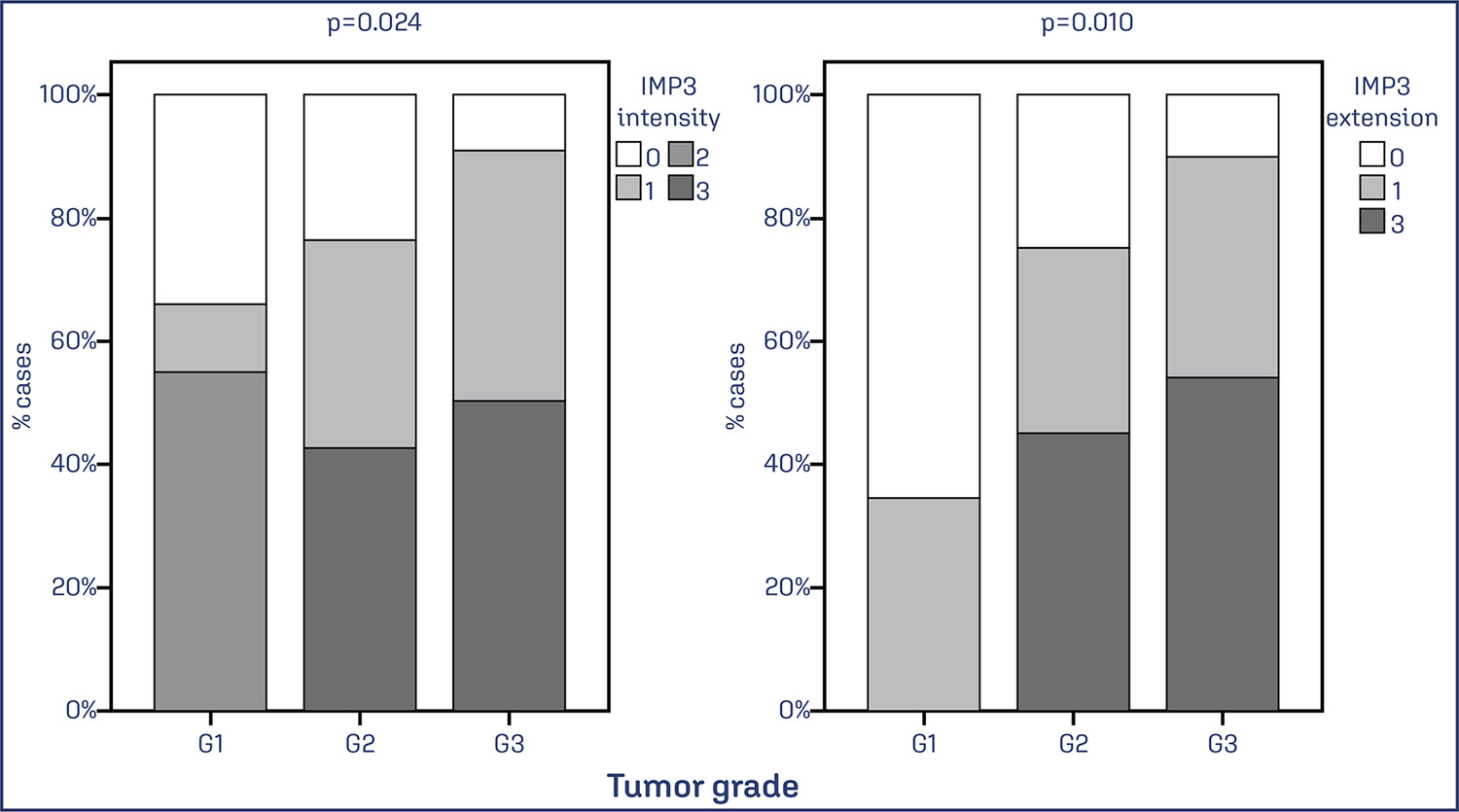Summary
Revista Brasileira de Ginecologia e Obstetrícia. 2024;46:e-rbgo30
To evaluate the mode of delivery according to Robson classification (RC) and the perinatal outcomes in fetal growth restriction (FGR) and small for gestational age (SGA) fetuses.
Retrospective cohort study by analyzing medical records of singleton pregnancies from two consecutive years (2018 and 2019). FGR was defined according to Delphi Consensus. The Robson groups were divided into two intervals (1–5.1 and 5.2–10).
Total of 852 cases were included: FGR (n = 85), SGA (n = 20) and control (n=747). FGR showed higher percentages of newborns < 1,500 grams (p<0.001) and higher overall cesarean section (CS) rates (p<0.001). FGR had the highest rates of neonatal resuscitation and neonatal intensive care unit admission (p<0.001). SGA and control presented higher percentage of patients classified in 1 - 5.1 RC groups, while FGR had higher percentage in 5.2 - 10 RC groups (p<0.001). FGR, SGA and control did not differ in the mode of delivery in the 1-5.1 RC groups as all groups showed a higher percentage of vaginal deliveries (p=0.476).
Fetuses with FGR had higher CS rates and worse perinatal outcomes than SGA and control fetuses. Most FGR fetuses were delivered by cesarean section and were allocated in 5.2 to 10 RC groups, while most SGA and control fetuses were allocated in 1 to 5.1 RC groups. Vaginal delivery occurred in nearly 60% of FGR allocated in 1-5.1 RC groups without a significant increase in perinatal morbidity. Therefore, the vaginal route should be considered in FGR fetuses.
Summary
Revista Brasileira de Ginecologia e Obstetrícia. 2024;46:e-rbgo49
The purpose of this study was to analyze the available evidence regarding the efficacy of iPDE5 in the treatment of female sexual dysfunction (FSD).
A comprehensive literature search was conducted in March 2023 through the main scientific databases.
A total of 53 articles were identified, out of which, 6 met the predefined inclusion criteria. All of these were randomized controlled trials. Among the included studies, 4 demonstrated the effectiveness of sildenafil in improving sexual response and addressing FSD, while 2 studies failed to establish its efficacy in this context.
Overall, the efficacy of sildenafil in the treatment of FSD remains controversial and inconclusive based on the available evidence. Further research is necessary to clarify the therapeutic potential of iPDE5 in addressing FSD and to better understand the factors that influence treatment outcomes.

Summary
Revista Brasileira de Ginecologia e Obstetrícia. 2024;46:e-rbgo55
Our study evaluated the effectiveness of the Botucatu Abbreviated Protocol in breast magnetic resonance imaging (MRI) within Brazil’s public healthcare system, focusing on its impact on patient access to MRI exams.
This retrospective study involved 197 breast MRI exams of female patients over 18 years with histological breast carcinoma diagnosis, conducted at Hospital das Clínicas de Botucatu - UNESP between 2014 and 2018. Two experienced examiners prospectively and blindly analyzed the exams using an Integrated Picture Archiving and Communication System (PACS). They first evaluated the Botucatu Abbreviated Protocol, created from sequences of the complete protocol (PC), and after an average interval of 30 days, they reassessed the same 197 exams with the complete protocol. Dynamic and morphological characteristics of lesions were assessed according to BI-RADS 5th edition criteria. The study also analyzed the average number of monthly exams before and after the implementation of Botucatu Abbreviated Protocol.
The Botucatu Abbreviated Protocol showed high sensitivity (99% and 96%) and specificity (90.9% and 96%). There was a significant increase in the average monthly MRI exams from 6.62 to 23.8 post-implementation.
The Botucatu Abbreviated Protocol proved effective in maintaining diagnostic accuracy and improving accessibility to breast MRI exams, particularly in the public healthcare setting.
Summary
Revista Brasileira de Ginecologia e Obstetrícia. 2024;46:e-rbgo66
This study aimed to investigate the effects of the presence of subchorionic hematoma (SH) in early pregnancies with threatened miscarriage (TM) on levels of first-trimester maternal serum markers, pregnancy-associated plasma protein-A (PAPP-A), and free β-human chorionic gonadotropin (β-hCG) levels.
The data of TM cases with SH in the first trimester between 2015 and 2021 were evaluated retrospectively. The data of age and gestational age-matched TM cases without SH were also assessed to constitute a control group. Demographic characteristics, obstetric histories, ultrasonographic findings, and free β-hCG and PAPP-A levels of the groups were compared.
There were 119 cases in the study group and 153 cases in the control group. The median vertical and longitudinal lengths of the SH were 31 mm and 16 mm. The median age of both groups was similar (p=0.422). The MoM value of PAPP-A was 0.088 (.93) in the study group and 0.9 (0.63) in the control group (p=0.519). Similarly, the MoM value of free β-hCG was 1.04 (0.78) in the study group and 0.99 (0.86) in the control group (p=0.66). No significant relationship was found in the multivariate analysis between free β-hCG MoM, PAPP-A MoM, age, gravida, and vertical and longitudinal lengths of the hematoma (p>0.05).
The level of PAPP-A and free β-hCG were not affected by the SH. Therefore, these markers can be used reliably in TM cases with SH for the first-trimester fetal aneuploidy screening test.

Summary
Revista Brasileira de Ginecologia e Obstetrícia. 2024;46:e-rbgo65
Eclampsia is a hypertensive disorder that occurs during pregnancy and can lead to death. The literature has gaps by not providing comprehensive data on the epidemiology of the disease, restricting analysis to limited temporal intervals and geographical locations. This study aims to characterize the epidemiological profile of women who died from eclampsia in Brazil from 2000 to 2021.
The maternal mortality data were obtained from the Sistema de Informações sobre Mortalidade, with the following variables of interest selected: “Federative Unit,” “Year,” “Age Range,” “Race/Color,” and “Education Level.” The collection of the number of live births for data normalization was conducted in the Sistema de Informações sobre Nascidos Vivos. Statistical analyses were performed using GraphPad Prism, calculating odds ratio for variables and fixing number of deaths per 100,000 live births for calculating maternal mortality ratio (MMR).
There was a downward trend in maternal mortality rate during the study period. Maranhão stood out as the federative unit with the highest MMR (17 deaths per 100.000 live births). Mothers aged between 40 and 49 years (OR = 3.55, CI: 3.11–4.05) presents higher MMR. Additionally, black women showed the highest MMR (OR = 4.67, CI: 4.18–5.22), as well as mothers with no educational background (OR = 5.83, CI: 4.82–7.06).
The epidemiological profile studied is predominantly composed of mothers with little or no formal education, self-declared as Black, residing in needy states and with advanced aged. These data are useful for formulating public policies aimed at combating the issue.

Summary
Revista Brasileira de Ginecologia e Obstetrícia. 2024;46:e-rbgo63
Management of suspect adnexal masses involves surgery to define the best treatment. Diagnostic choices include a two-stage procedure for histopathology examination (HPE) or intraoperative histological analysis – intraoperative frozen section (IFS) and formalin-fixed and paraffin-soaked tissues (FFPE). Preoperative assessment with ultrasound may also be useful to predict malignancy. We aimed at determining the accuracy of IFS to evaluate adnexal masses stratified by size and morphology having HPE as the diagnostic gold standard.
A retrospective chart review of 302 patients undergoing IFS of adnexal masses at Hospital de Clínicas de Porto Alegre, between January2005 and September2011 was performed. Data were collected regarding sonographic size (≤10cm or >10cm), characteristics of the lesion, and diagnosis established in IFS and HPE. Eight groups were studied: unilocular lesions; septated/cystic lesions; heterogeneous (solid/cystic) lesions; and solid lesions, divided in two main groups according to the size of lesion, ≤10cm or >10cm. Kappa agreement between IFS and HPE was calculated for each group.
Overall agreement between IFS and HPE was 96.1% for benign tumors, 96.1% for malignant tumors, and 73.3% for borderline tumors. Considering the combination of tumor size and morphology, 100% agreement between IFS and HPE was recorded for unilocular and septated tumors ≤10cm and for solid tumors.
Stratification of adnexal masses according to size and morphology is a good method for preoperative assessment. We should wait for final HPE for staging decision, regardless of IFS results, in heterogeneous adnexal tumors of any size, solid tumors ≤10cm, and all non-solid tumors >10cm.
Summary
Revista Brasileira de Ginecologia e Obstetrícia. 2024;46:e-rbgo62
To report the prevalence of malignant transformation of vulvar lichen sclerosus (VLS) and possible risk factors.
This is a cohort study with data analysis from medical records of 138 patients with histological diagnosis of VLS registered at the Vulvar Pathology Outpatient Clinic of the University Hospital, between 2007 and 2017. Predominance of risk factors was performed using logistic regression analysis. The variables studied were the length of follow-up, age, regular or irregular follow up; presence of symptoms (dyspareunia, pruritus and/or vulvar burning); histology characteristics, the presence of epithelial hyperplasia; and the presence of autoimmune diseases.
There were 138 patients included in the study, and among them five progressed to malignant transformation. The patients had a median age of 59 years and 83% were symptomatic. The most frequent symptom was itching with 72%. Autoimmune diseases were present in 11.6%, the most prevalent being thyroid disease. All five case of malignant transformation (0.6%) had an irregular follow up. The logistic regression analysis was used among the studied variables, and no statistical significance was found among them (p ≥ 0.05). The relationship between hyperplasia and the clinical outcome of malignant transformation, in which non-significant but acceptable p value close to 0.05 was observed.
The prevalence of malignant transformation in patients with VLS was 0.6%, and common factors were the lack of adherence to medical treatments and the loss of follow-up.

Summary
Revista Brasileira de Ginecologia e Obstetrícia. 2024;46:e-rbgo61
Endometrial cancer (EC) is a heterogeneous disease with recurrence rates ranging from 15 to 20%. The discrimination of cases with a worse prognosis aims, in part, to reduce the length of surgical staging in cases with a better prognosis. This study aimed to evaluate the association between Insulin-like growth factor II mRNA-binding protein 3 (IMP3) expression and prognostic and morphological factors in EC.
This retrospective, cross-sectional, analytical study included 79 EC patients - 70 endometrioid carcinoma (EEC) and 9 serous carcinoma (SC) - and 74 benign endometrium controls. IMP3 expression was evaluated by immunohistochemistry-based TMA (Tissue Microarray), and the results were associated with morphological and prognostic factors, including claudins 3 and 4, estrogen and progesterone receptors, TP53, and KI67.
IMP3 expression was significantly higher in SC compared to EEC in both extent (p<0.001) and intensity (p=0.044). It was also significantly associated with worse prognostic factors, including degree of differentiation (p=0.024, p<0.001), staging (p<0.001; p<0.001) and metastasis (p=0.002; p<0.001). IMP3 expression was also significant in extent (p=0.002) in endometrial tumors compared with controls. In addition, protein TP53 and KI67 showed significant associations in extent and intensity, respectively.
IMP3 expression was associated with worse prognostic factors studied. These findings suggest that IMP3 may be a potential biomarker for EC poorer prognosis.
